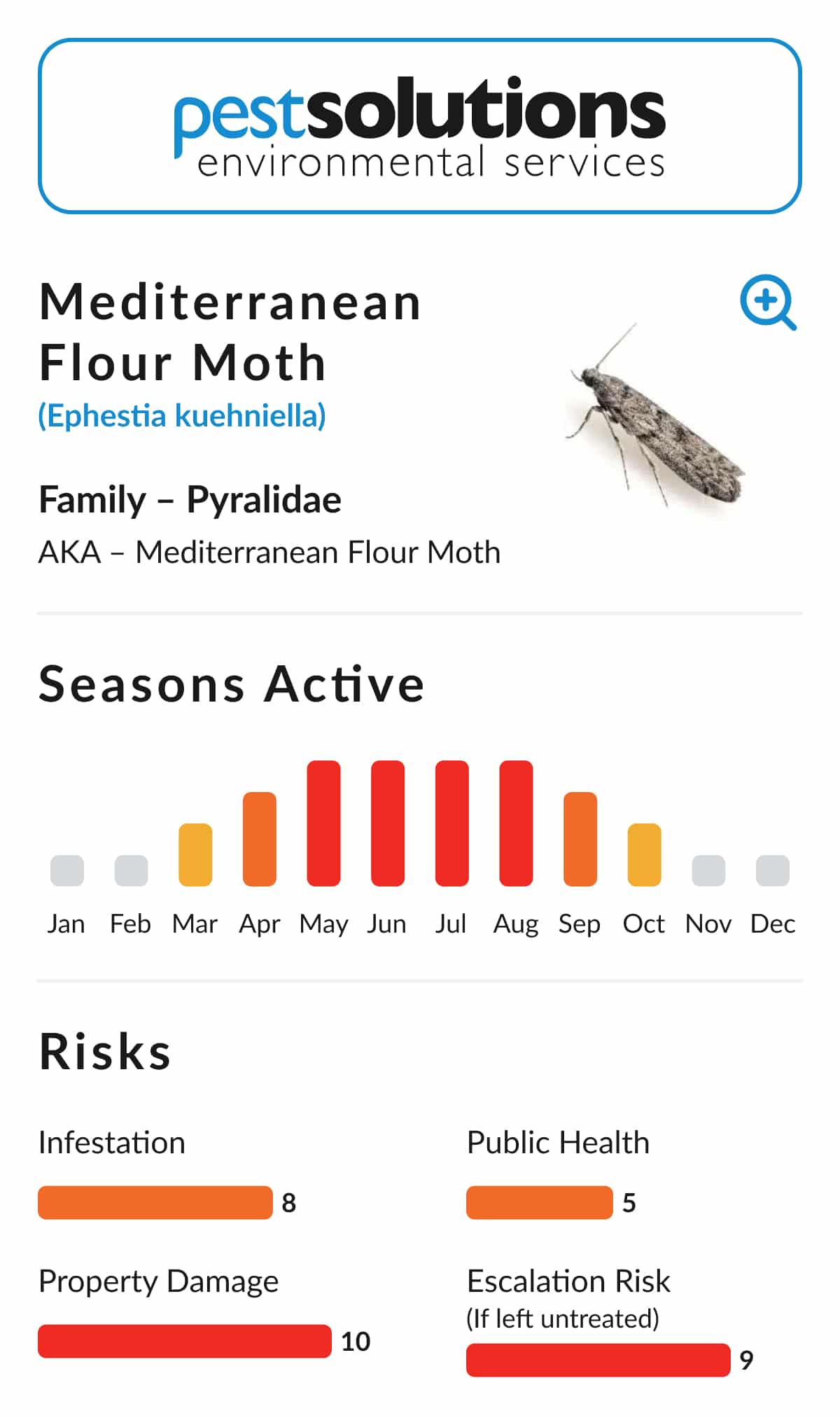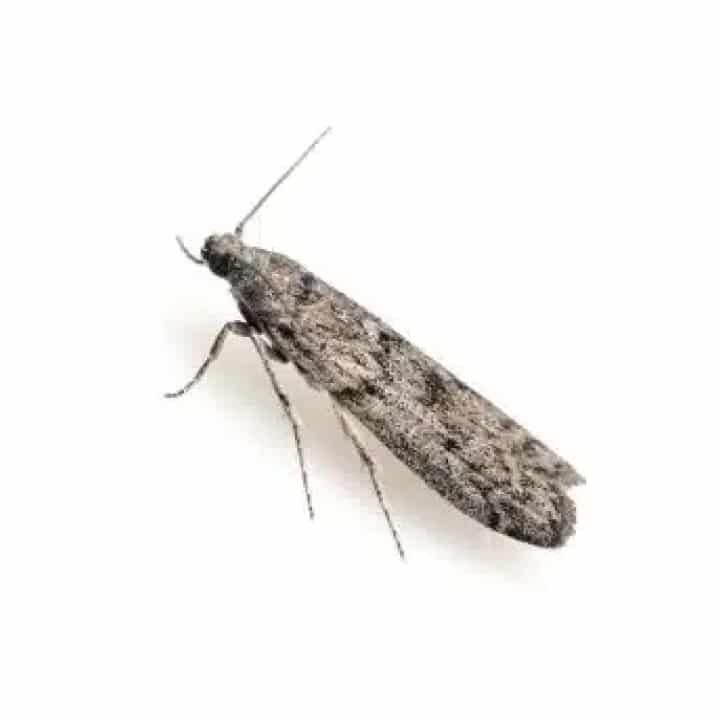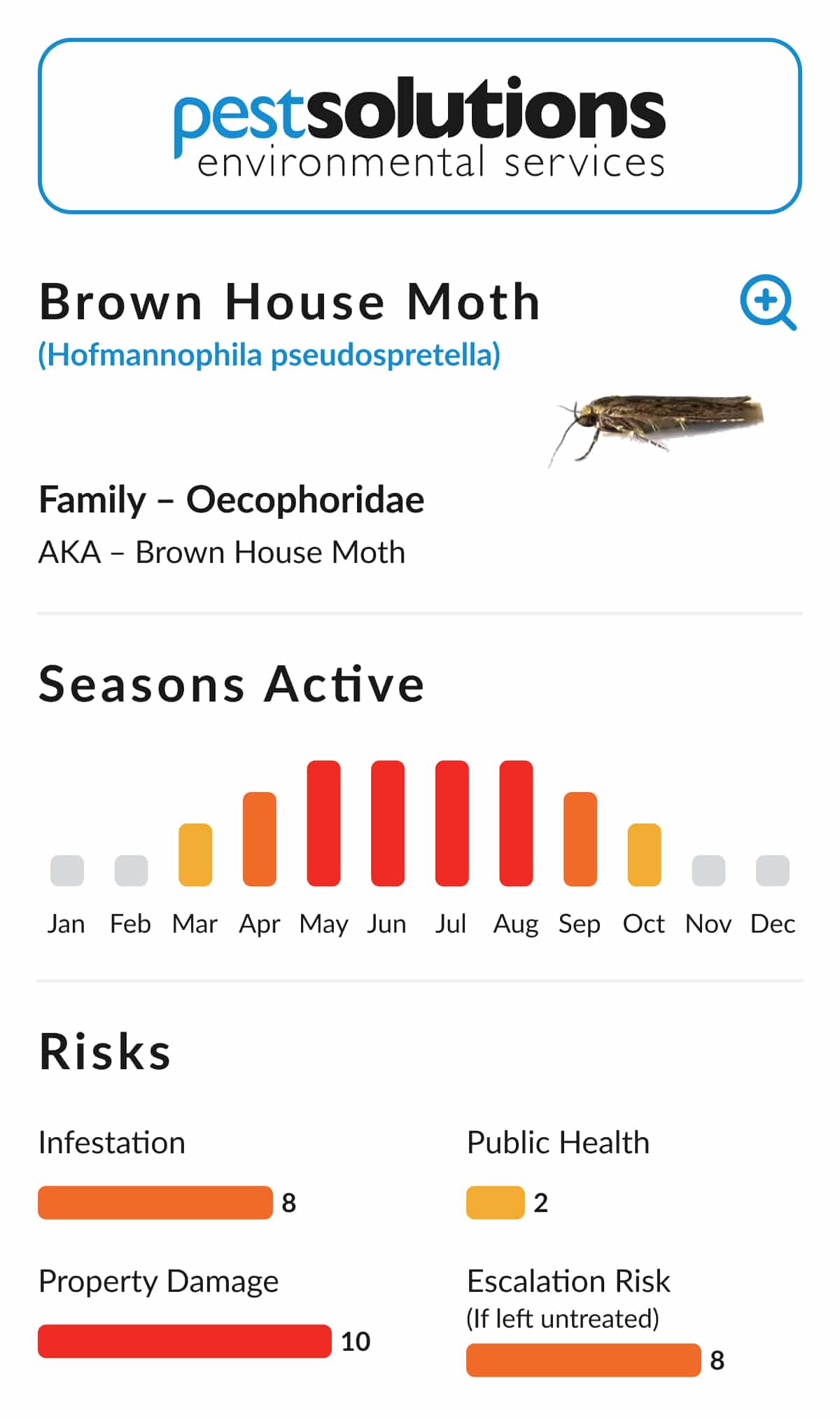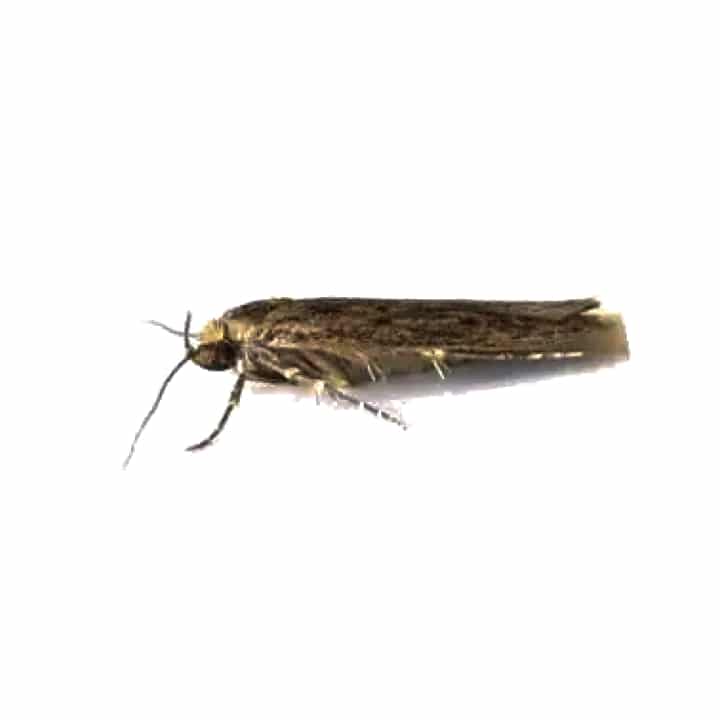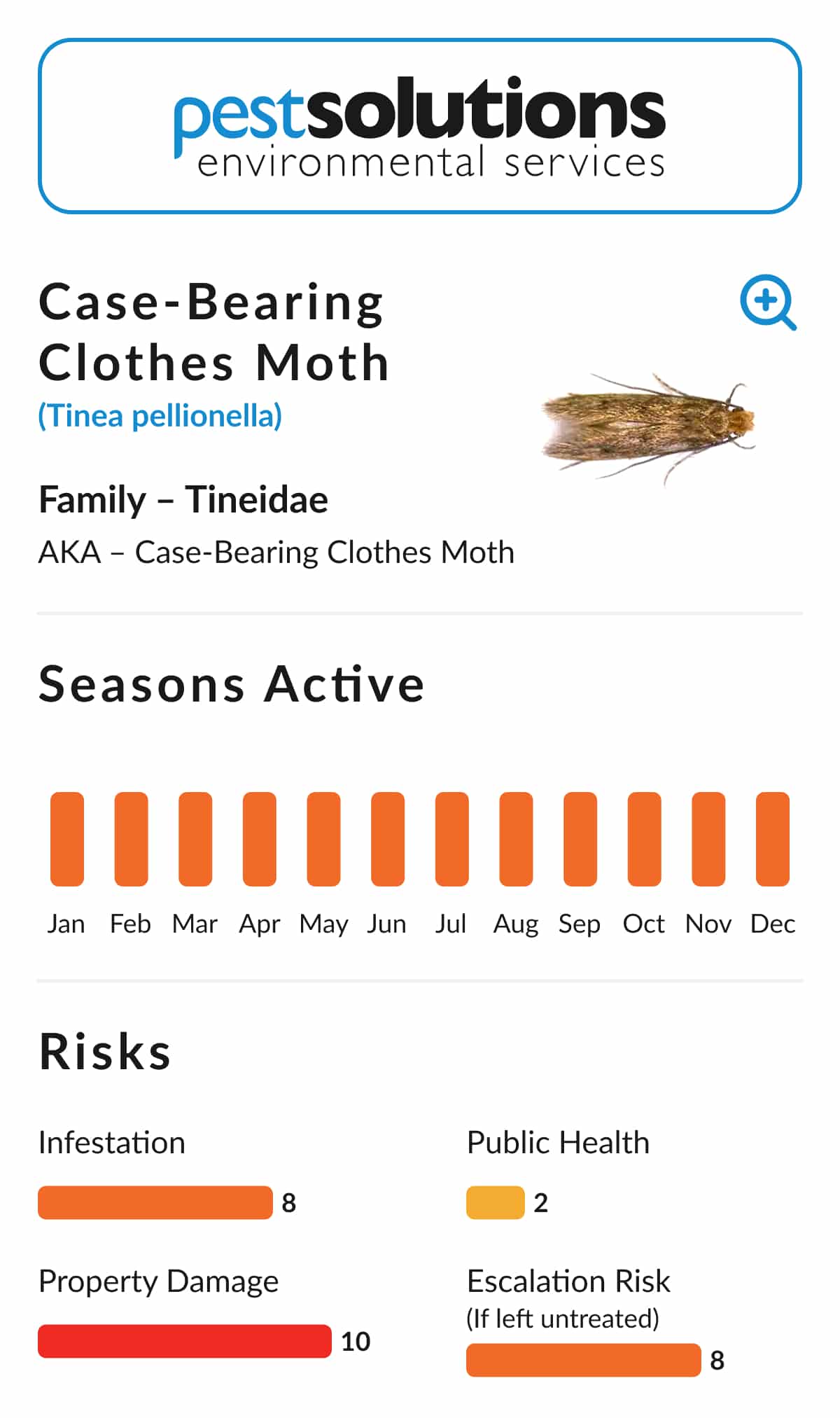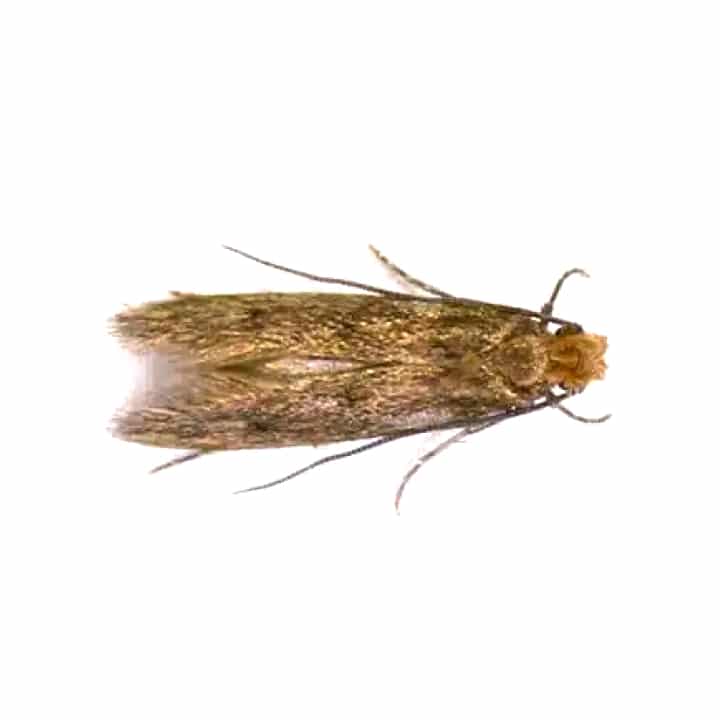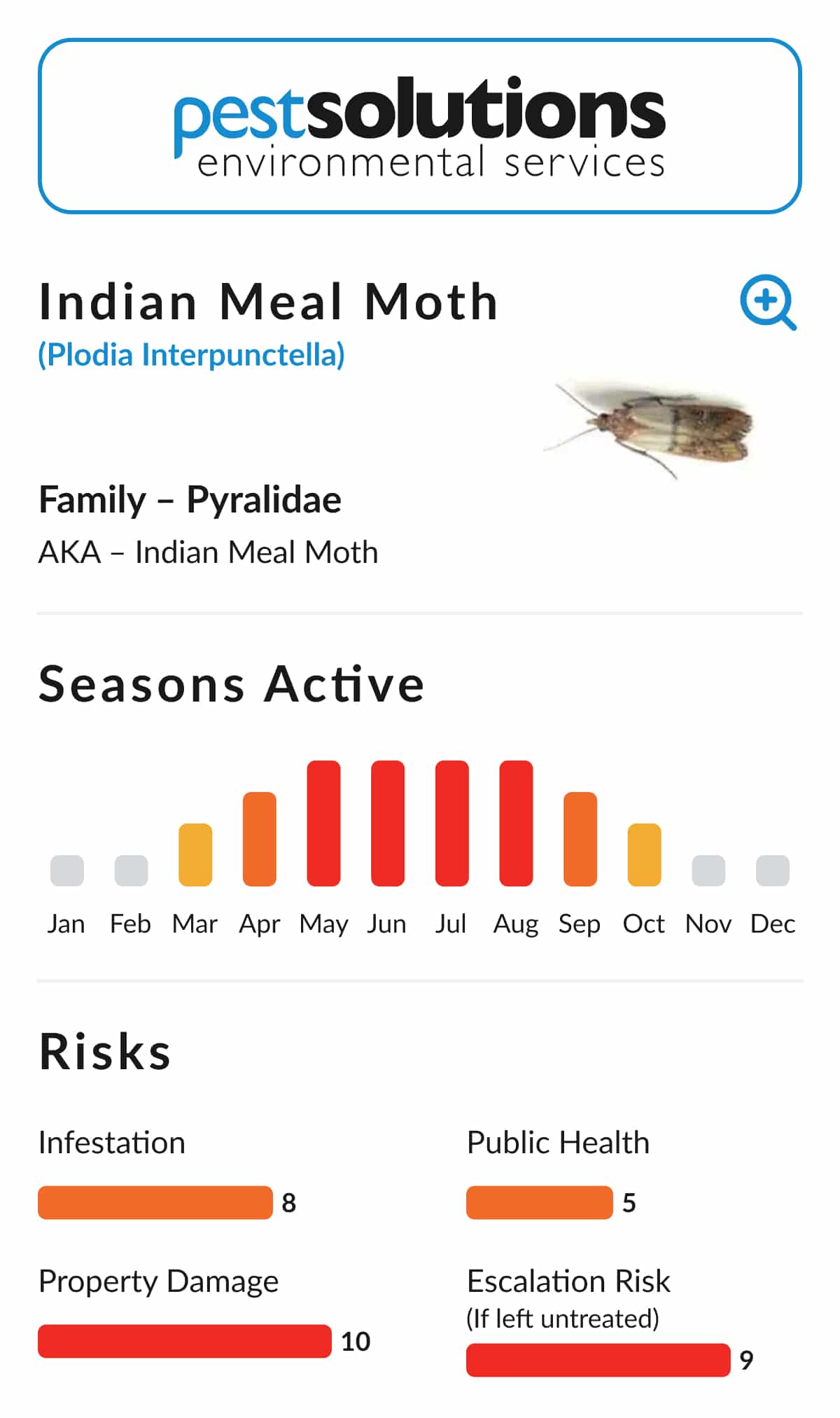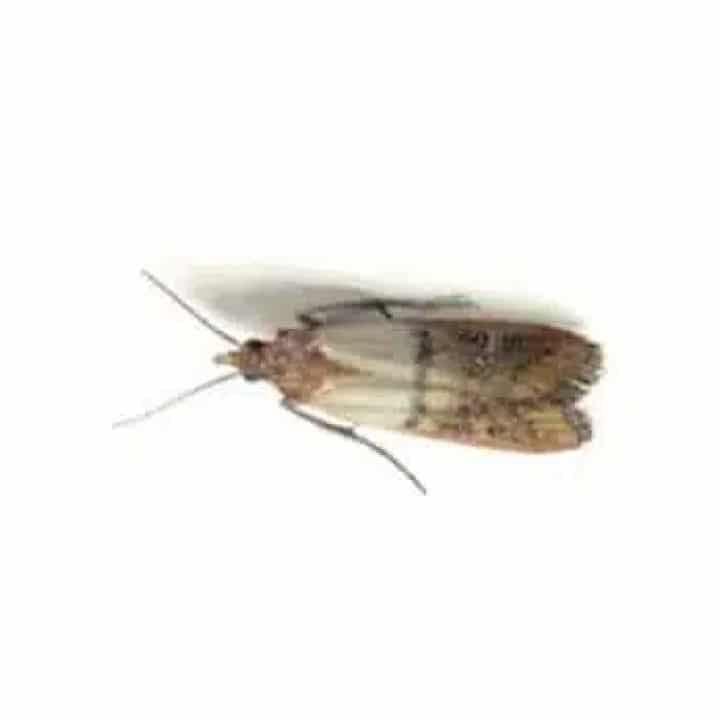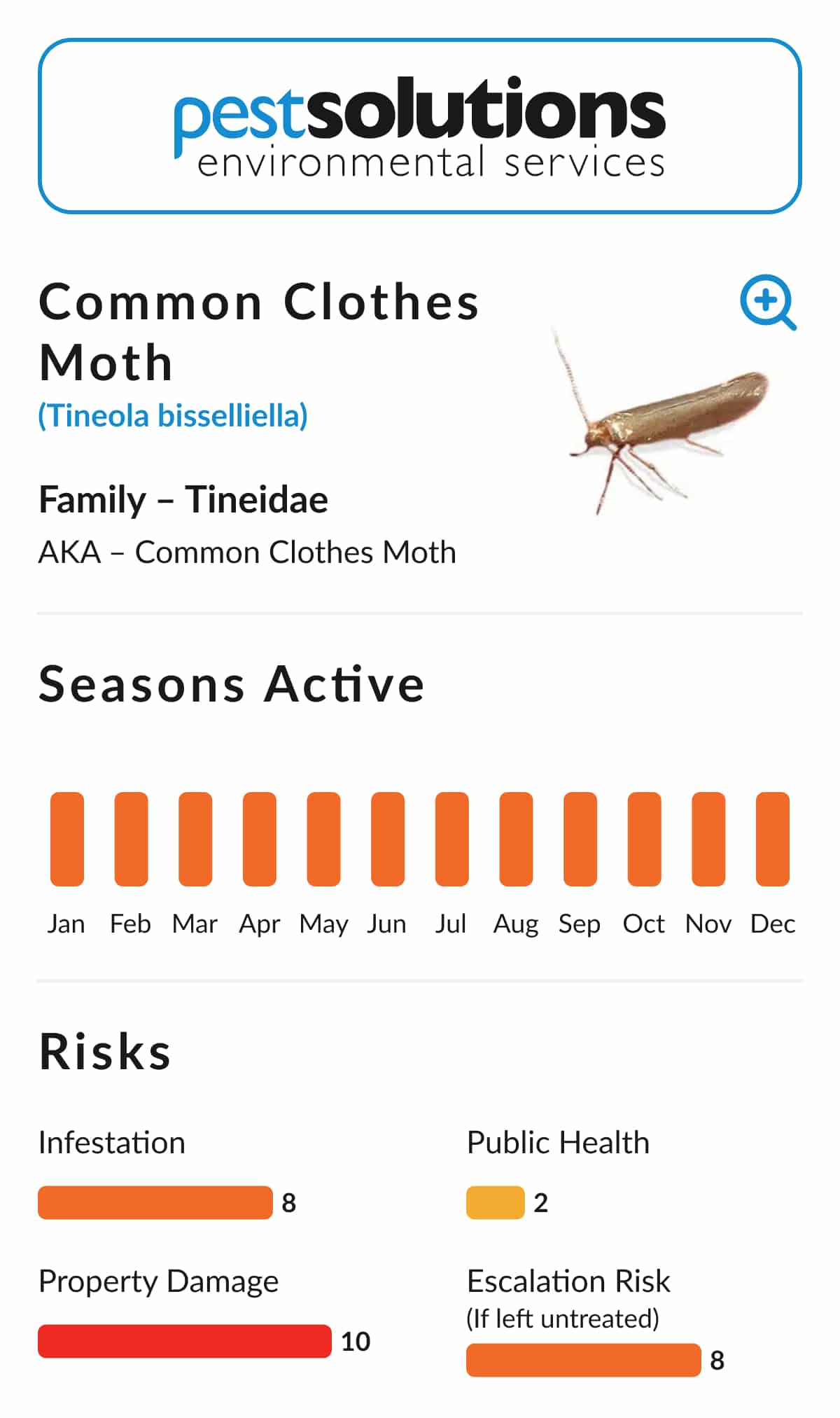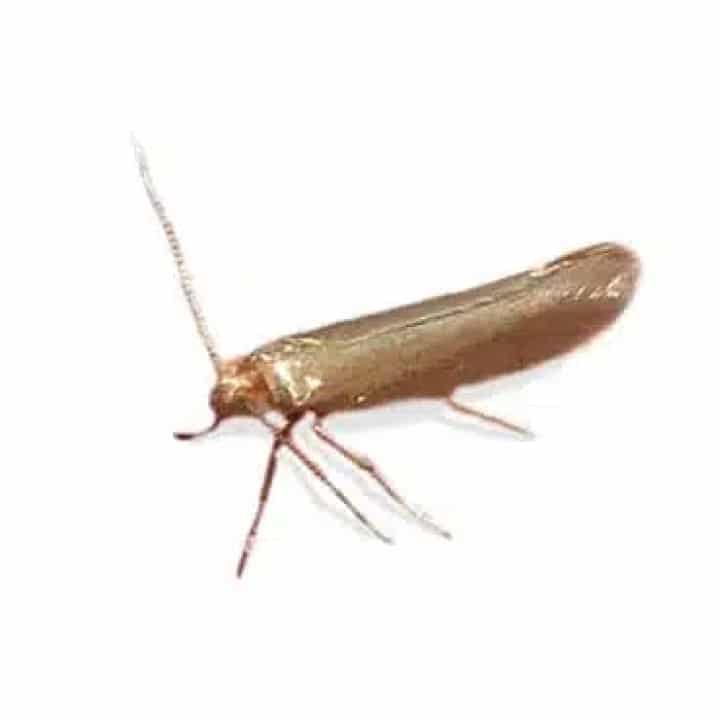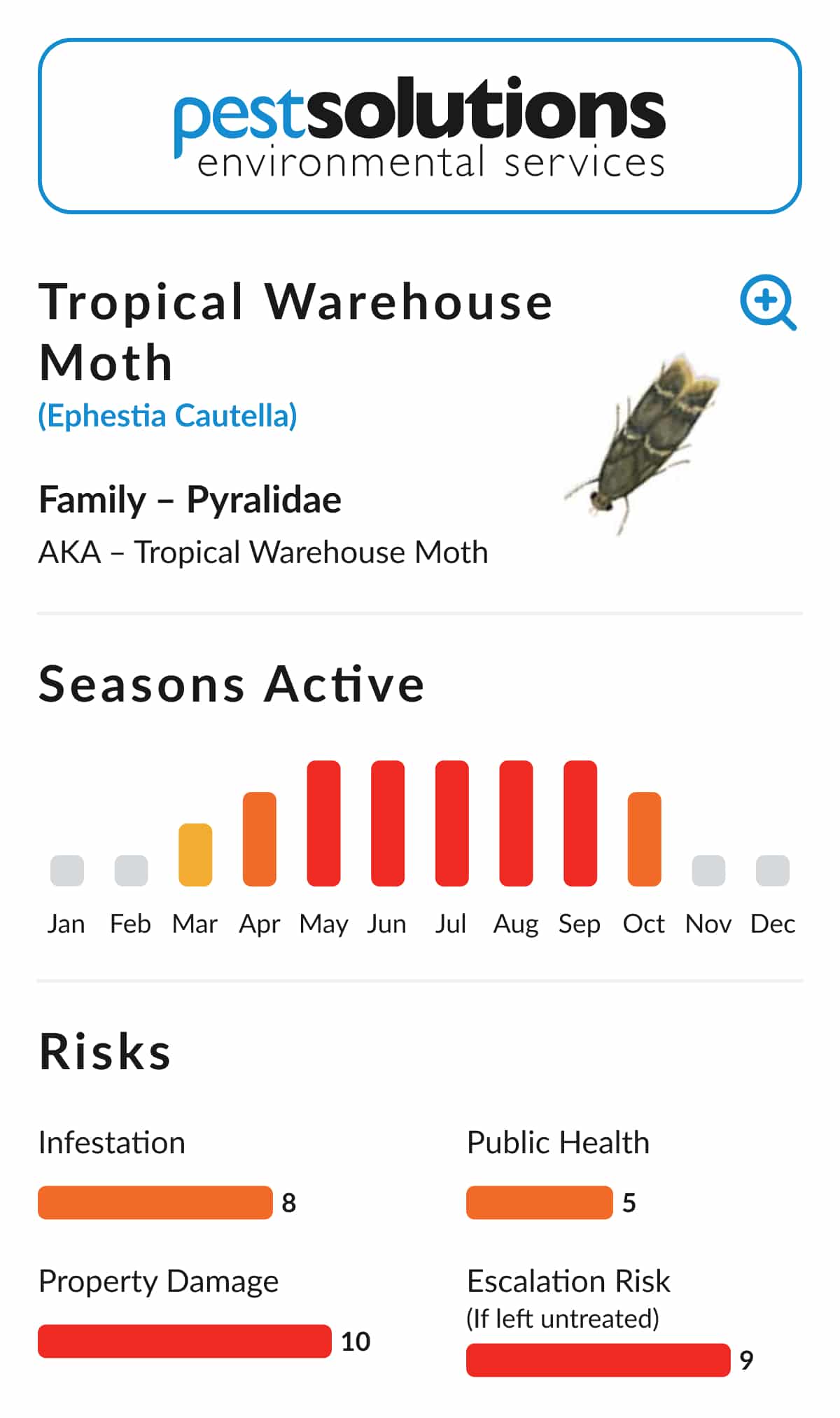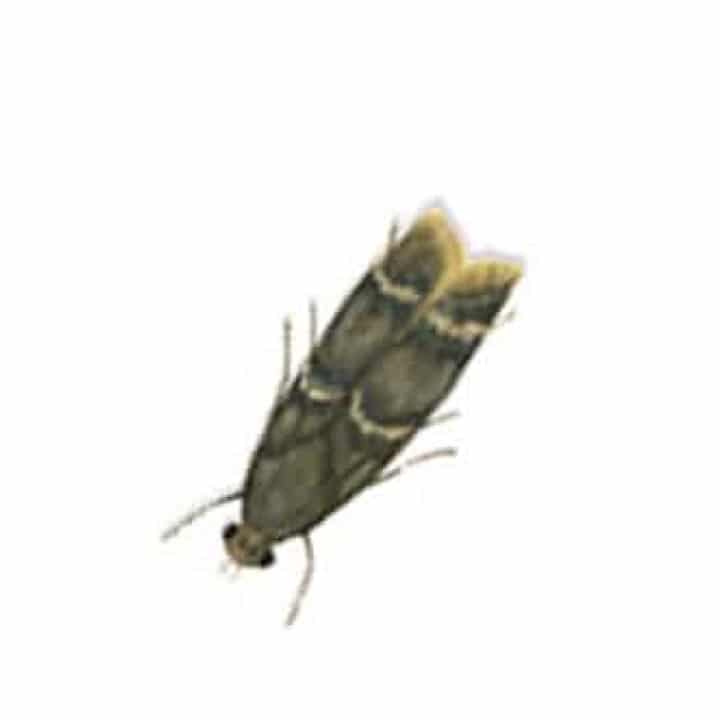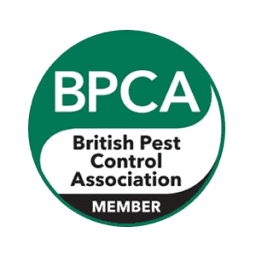Habitat and Distribution – Mediterranean Flour Moth (Ephestia kuehniella)
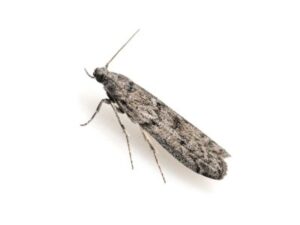
Biology – Mediterranean Flour Moth (Ephestia kuehniella)
The Mediterranean Flour Moth has a complete life cycle consisting of four stages: egg, larva, pupa, and adult.
- Larvae: The larvae are variable in colour, often yellowish or pale greenish depending on the type of food they are consuming. They do not exhibit the black speckling that is characteristic of some other stored product moth larvae.
- Adults: Adult moths are identifiable by their grey forewings and whitish hindwings, although larval characteristics are considered more reliable for accurate identification.
Why They’re a Problem – Mediterranean Flour Moth (Ephestia kuehniella)
The primary issue caused by the Mediterranean Flour Moth is the silk produced by its larvae. This silk can accumulate and cause blockages in flour chutes, ducts, and other machinery used in food processing. In addition to the physical disruption of operations, the presence of larvae and silk leads to contamination of food products.
Although the species is found worldwide, it is particularly significant in tropical regions. In those areas, it often replaces other moth species as the main pest in flour mills. In the UK, however, it is already the most dominant flour moth species in these environments.
Control and Prevention – Mediterranean Flour Moth (Ephestia kuehniella)
Effective control of the Mediterranean Flour Moth depends on a combination of sanitation and chemical treatment:
- Good hygiene: Regular cleaning to remove spilled food and waste materials is essential to eliminate food sources and breeding grounds.
- Residual insecticides: Apply approved sprays and dusts to the structure to reduce adult and larval populations.
- Fumigation: In cases of larger infestations, fumigation of infested flour or grain by a specialist contractor may be required.
Consistent cleaning practices and timely chemical interventions are key to preventing infestations and minimising contamination risks in food handling environments.
Professional Support – Mediterranean Flour Moth (Ephestia kuehniella)
If you suspect an infestation of the Mediterranean Flour Moth in your flour mill, bakery, or food storage facility, prompt professional intervention is essential. Pest Solutions offers expert identification, monitoring, and treatment services tailored to stored product pests.
Visit https://www.pestsolutions.co.uk to get in touch with our team or to schedule an inspection.
